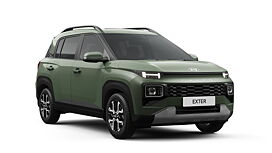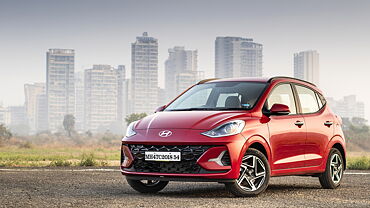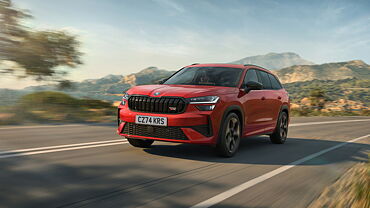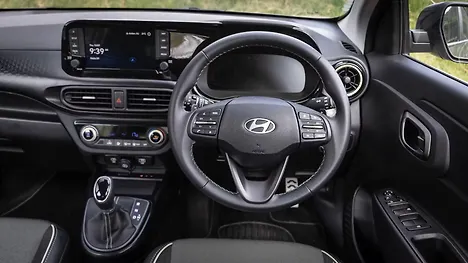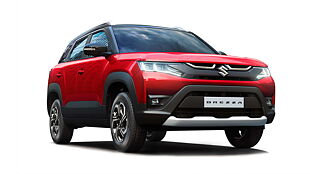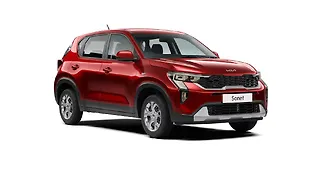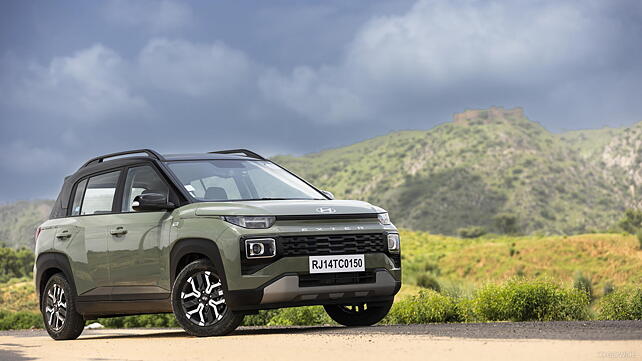
The Rs 8-12 lakh car segment is not one to be taken lightly. It has multiple models from several brands doing remarkable sales numbers every month. Hyundai, for one, has the Nios hatchback and the Venue compact SUV averaging sales of 7,000 and 10,000 units, respectively. Now the thing is, the entire Nios range is within Rs 10 lakh on-road even after factoring in the price hikes over the years, but the Venue (like every other compact SUV) has moved up the pricing ladder mainly because of its extensive variant line-up and additional features in the high-end variants. Naturally, the Venue’s price-to-size quotient has taken a hit, especially when the top-end SX (O) turbo DCT costs over Rs 15.50 lakh on-road. What Hyundai, then, ideally needs is a car with the same form factor which is more budget-friendly.
Enter the Exter, Hyundai’s newest offering which, by every definition, is a real crossover. It’s a funky little mix-and-match between the Nios and the Venue. After all, the Exter is based on the Nios, it uses the same engine and gearbox options, but, in essence, it’s a micro SUV. At this point, it would be safe to assume that the Exter is either going to be the first car purchase for many or an upgrade for those looking for that SUV form factor on a budget. So when you are paying north of Rs 8 lakh, then a plain old hatchback simply would not do. What you would want, then, is something that looks more substantial. And the Exter is exactly that.

It is, of course, still a compact car so you aren’t getting a whole lot more of road presence compared to the Nios but the Exter is categorically more rugged looking and eye-catching of the two. Also, there is no denying the Exter’s real-world benefits that come with its higher ground clearance and taller, wider proportions. We have driven the Exter and I can tell you with confidence that it is sufficiently roomy for a small family. It has better ingress, a bigger boot, and a rear seat that’s slightly more supportive so if all three are in your list of ‘must have’ then the Exter makes for a more practical choice.

Coming to the driving experience, it’s not as black and white as you may tend to paint it after looking at the exterior and the interior. If I am to put it simply, the Exter is extremely user-friendly – the visibility is good, the steering is light but not overly assisted, the pedal placement is ideal and most importantly, the 1.2-litre, four-cylinder petrol engine is impressively refined and tractable. Now the thing is, all of this holds true for the Nios, as well, so what is it that’s different when driving the Exter? Well, given that it’s a relatively high-riding compact vehicle, you get the added benefits of having more ground clearance and frontal visibility which is always good at this time of the year in the monsoon when the roads are decimated. We will get you the full picture once we have extensively driven the Exter, though for now, the standout highlights are the paddle shifters for the AMT version and let me tell you, they work quite well in adding to the driving experience. You can read about it in our first drive review by clicking here.

In conclusion, the Exter gets you a more practical cabin, a bigger boot, extra features (read: sunroof, paddle shifters, digital cluster etc), and the novelty of an SUV form factor. It may not seem like a convincing buy if you are looking for a fundamentally different driving experience compared to the Nios but on the contrary, the Exter has a personality of its own and the differences in design and usability are big enough to warrant having its own identity between the Venue and the Nios.

Pictures by Kapil Angane

